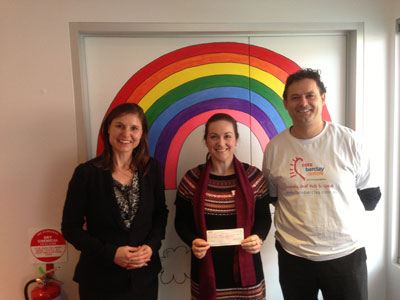Take a look at this beautiful US news story of a little boy who heard his fathers voice for the very first time. There’s nothing more heartwarming than to see than the joy and connection that parents share with their children when their child can hear for the first time – thanks to the wonders of modern technology shown in the video.
The Statistics
According to recent World Health Organization (WHO) statistics, 360 million people worldwide have a disabling hearing loss- that’s 5% of the worlds population. Out of those 360 million people affected, 328 million are adults and 32 million are children.
The National Institute of Deafness and other Communication Disorders ( NIDCD) reports that about 2 to 3 out of every 1,000 children in the United States are born deaf or hard of hearing. Nine out of every 10 children who are born deaf are born to parents who can hear.
Our Story
Thanks to the awesome attendance of our first ever Virtual Music Education Conference recently, we had the pleasure of personally visiting and contributing some of the proceeds from the conference to the Cora Barclay Centre Music Program here in our hometown of Adelaide, Australia.

Janice Tuck meeting staff and presenting a donation cheque to the Cora Barclay centre for hearing impaired children.
The Cora Barclay Centre is a family friendly community centre which helps deaf or hearing impaired kids learn to speak. Before we visited, we knew that the centre had a music program, but what we didn’t know was music is a massive chunk of what children do. Often Children are learning music even before they can even hear!
Learning From The Experts
While we were there we had the chance to have a look around the centre we were aided by our kind host and development officer of the centre, Julie. During our time with her we had the chance see a music session for toddlers in action with music teacher,Tony; we talked to the CEO of the centre, Michael Forwood and we had a chance to ask some questions with clinician Rachel. In just the short time we were there we learned so much about teaching children who are deaf or have a loss of hearing – so we just had to share it. Here’s what we learned from their collective knowledge on our visit:
Deaf children learn to sing in therapy as babies because just doing it trains the correct areas of the brain to be able to accept sound if and when it happens.
If children have early help with therapy and correct aids, they can develop language skills which are on par with their hearing peers by the time they are old enough for school.
If a child does not have early help, they can be behind in language skills by at least three years.
Music is a great vehicle for learning language skills – Now of course we all know this one this already, but what we didn’t know was deaf children do music in early therapy sessions as a baby, then as toddlers- often even before they receive treatment such as a Cochlear implant to help amplify their hearing.
Tips For Teachers
When we asked Rachel (clinician) about what advice she could give to teachers who had a hearing impaired or deaf child in their classroom. She gave us three practical tips that any teacher could use:
Tip #1: Communicate with Parents
All parents know their child best. A parent will be able to give you more information about what the child responds well to, what is difficult for them and what learning techniques they have previously used in therapy sessions.
Tip #2: Use an FM headphone and microphone system
Even if a child is fitted with a hearing aid or other device to help with hearing, in a noisy classroom there are still obstacles such as background noise and blurred sounds for a child to face which dramatically impacts their grammatical learning ability. Using a FM device helps to improve the sound quality. On the teacher, the system looks similar to a small lapel microphone.
I found this great PDF explaining in detail how these devices work and what they look like. Click here to see.
Tip #3: Get training
At the Cora Barclay Centre where we visited they have specific training available to help teachers. Check out you local centre and find out what training is available to you. They have some great ideas.
Other Useful Links and Resources
1. This is a video link to a music therapy session at the Cora Barclay Centre. You’ll get an idea of a few of the activities that these centres do with younger children in this video.
https://www.youtube.com/watch?v=_InUbgfX_dE
2. A teenagers experience with cochlear implants
https://www.youtube.com/watch?v=ndIUWfTTI8c
3. An informative article on what happens when hearing doesn’t work.
http://www.aussiedeafkids.org.au/how-we-hear.html
4. All about FM hearing Systems
http://www.aussiedeafkids.org.au/all-about-fm-1.html
5. Tips for coaches – great advice for teachers too! This will give you some practical tips of things you can do to help a child that has hearing loss in a class.
http://www.aussiedeafkids.org.au/tips-for-coaches.html
6. A fascinating short video on how the inside of the ear looks and works.
http://www.youtube.com/watch?v=r-c5GpoD8wI


Leave A Comment